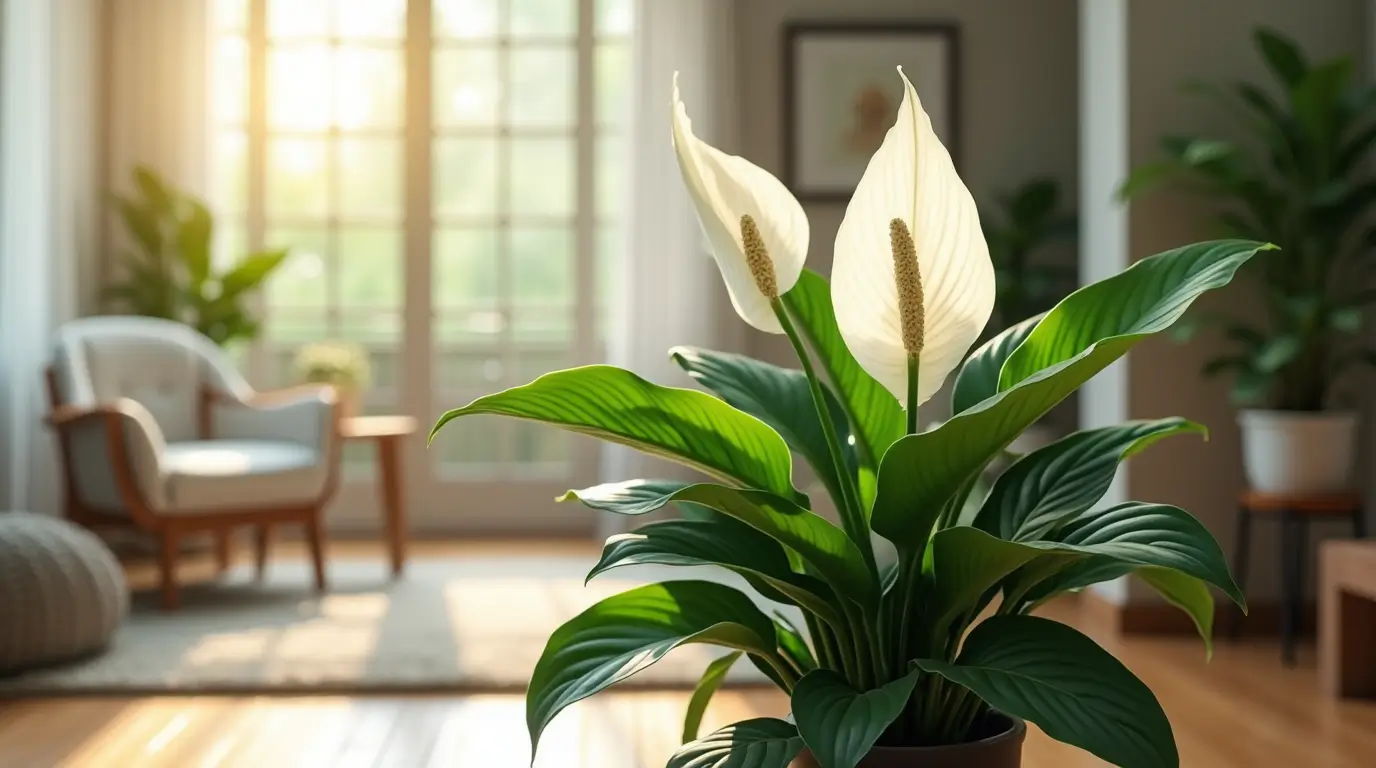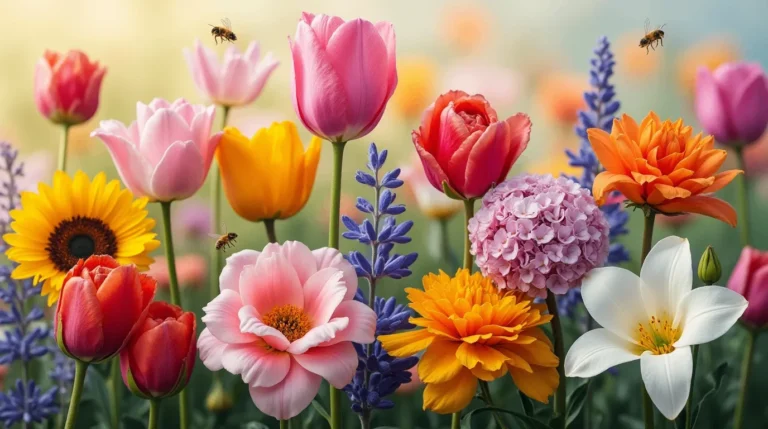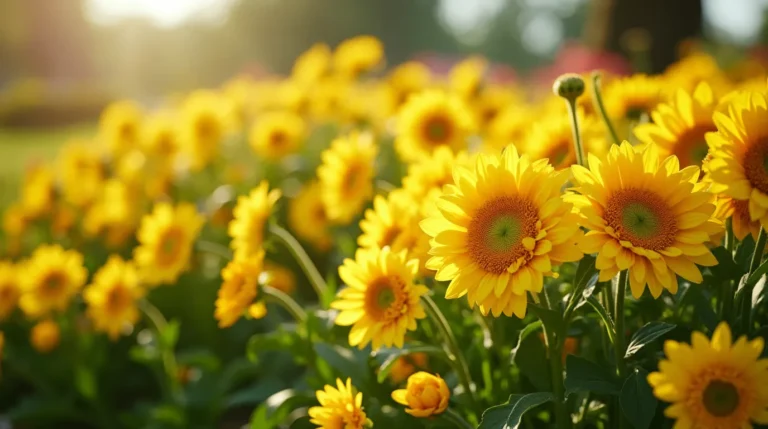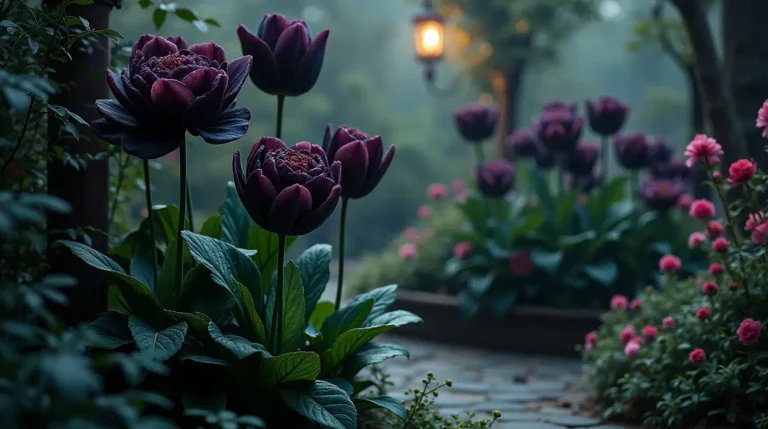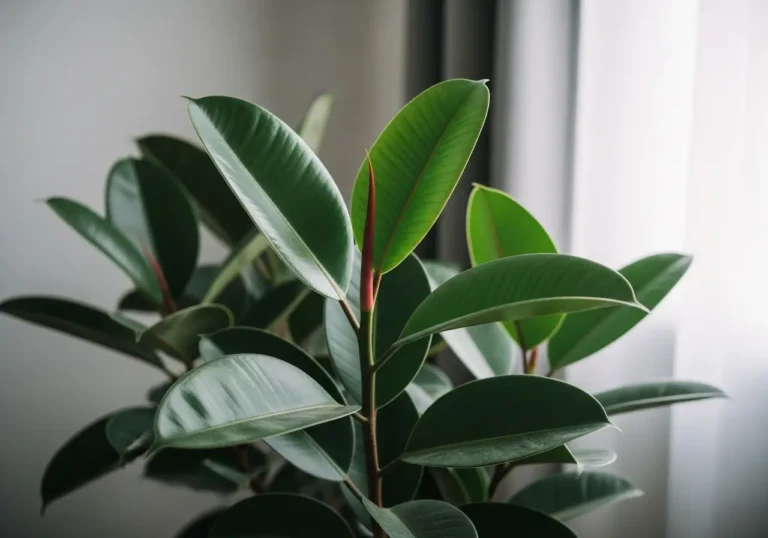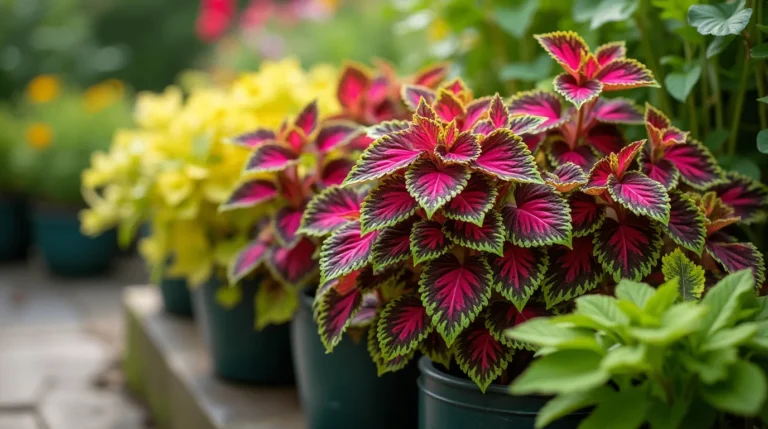Peace Lily Wonders: Transform Your Space With Vibrant Energy
Introduction
The Peace Lily is more than just a beautiful houseplant—it’s a transformative addition to any indoor space. Known for its glossy green leaves and elegant white flowers, the Peace Lily brings a touch of vibrant energy to homes, offices, and even bathrooms. But its appeal goes beyond aesthetics. This versatile plant is a powerhouse when it comes to purifying the air, making it a favorite among indoor gardening enthusiasts and beginners alike.
Whether you’re looking to enhance your home decor, improve indoor air quality, or simply enjoy the calming presence of greenery, the Peace Lily is a perfect choice. In this guide, we’ll explore the wonders of this remarkable plant, from its key benefits and care instructions to creative ways to display it in your space. Get ready to discover how the Peace Lily can breathe life and serenity into your surroundings!
1. Key Benefits of Peace Lilies
The Peace Lily is more than just a pretty face—it’s a powerhouse of benefits that make it a must-have for any indoor space. From improving air quality to enhancing your home’s aesthetic, this versatile plant offers a range of advantages that go beyond its lush, tropical appearance. Let’s dive into the top reasons why the Peace Lily deserves a spot in your home or office.
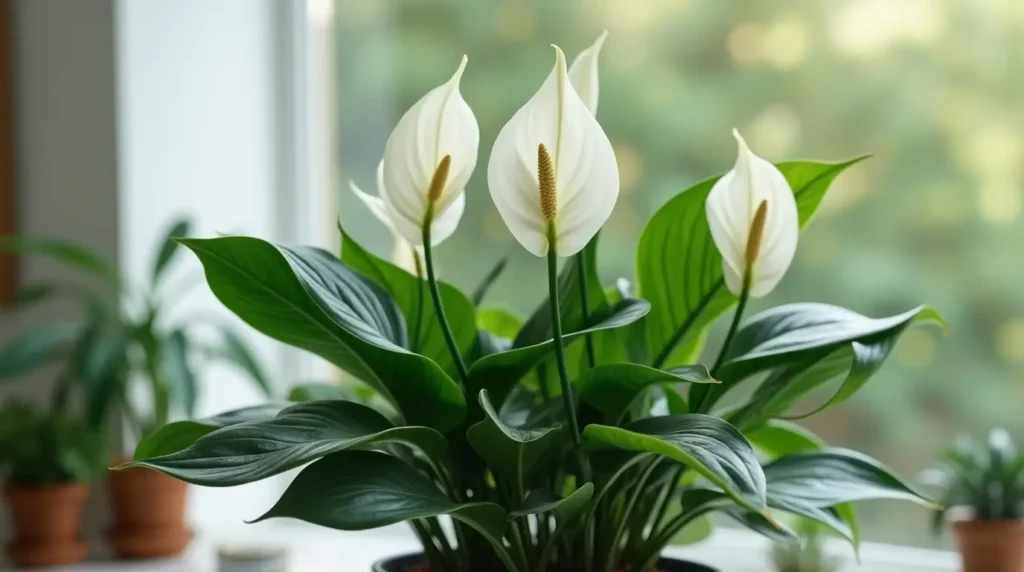
Air-Purifying Powerhouse
One of the most impressive advantages of the Peace Lily is its capacity to cleanse the air. According to the NASA Clean Air Study, this plant is highly effective at removing harmful toxins like formaldehyde, benzene, and carbon monoxide from the air. These toxins are commonly found in household items such as furniture, cleaning products, and paints, making the Peace Lily a natural ally in creating a healthier indoor environment.
Not only does it filter out pollutants, but the Peace Lily also increases humidity levels by releasing moisture into the air. This is especially beneficial during dry winter months or in air-conditioned spaces, where low humidity can cause discomfort. By adding a Peace Lily to your home, you’re not just decorating—you’re investing in cleaner, fresher air for you and your family.
Aesthetic Appeal for Home Decor
The Peace Lily is a showstopper when it comes to home decor. Its glossy, dark green leaves and striking white flowers (known as spathes) add a touch of elegance and vibrant energy to any room. Whether placed on a windowsill, side table or as a centerpiece, this plant effortlessly enhances the visual appeal of your space.
What makes the Peace Lily even more special is its versatility. It complements a wide range of interior styles, from modern minimalist to bohemian chic. Pair it with decorative pots or planters to match your decor theme, or group it with other indoor plants like snake plants or pothos for a lush, tropical vibe. With a Peace Lily, you’re not just adding a plant—you’re creating a statement piece that transforms your space.
Low-maintenance and Beginner-Friendly
If you’re new to indoor gardening or simply don’t have the time for high-maintenance plants, the Peace Lily is your perfect match. Known for being one of the most low-maintenance plants, it thrives with minimal care, making it ideal for busy individuals or those without a green thumb.
One of the standout features of the Peace Lily is its ability to communicate its needs. When it’s thirsty, the plant will droop slightly, signaling that it’s time to water. Once hydrated, it perks back up, making it easy to care for even for beginners. Additionally, it adapts well to low-light conditions, so you don’t need to worry about finding the perfect sunny spot. With Peace Lily, you can enjoy the beauty of indoor plants without the stress of complicated care routines.
Mood-Boosting and Stress-Relieving
Beyond its physical benefits, the Peace Lily also has a positive impact on mental well-being. Studies have shown that being around plants can reduce stress, boost mood, and increase productivity. The calming presence of the Peace Lily, with its lush foliage and serene white blooms, creates a tranquil atmosphere that helps you unwind after a long day.
Whether placed in your living room, bedroom, or workspace, the Peace Lily serves as a natural stress reliever. Its ability to purify the air and add a touch of nature to your surroundings makes it a powerful tool for creating a peaceful, rejuvenating environment.
By incorporating a Peace Lily into your home, you’re not just adding a plant—you’re embracing a lifestyle of cleaner air, stunning decor, and effortless care. In the next section, we’ll dive into the essential care tips to keep your Peace Lily thriving and vibrant.
2. How to Care for Your Peace Lily
The Peace Lily is known for being a low-maintenance plant, but it still requires proper care to thrive and showcase its full beauty. By following these simple yet effective care tips, you can ensure your Peace Lily remains vibrant and healthy, transforming your space with its lush greenery and elegant blooms.

Watering Your Peace Lily
Proper watering is key to keeping your Peace Lily happy. This plant thrives in soil that remains consistently moist, though it is prone to damage from excessive watering. Here’s how to get it right:
- Check the Soil: Before watering, touch the top inch of soil. Water the plant if the soil feels dry; if it’s still damp, check again in a day or two.
- Avoid Overwatering: Overwatering can lead to root rot, a common issue with Peace Lilies. Make sure your pot has drainage holes to let any extra water drain out.
- Watch for Signs: One of the unique features of the Peace Lily is its ability to communicate its needs. When thirsty, the plant will droop slightly. After watering, it will perk back up within a few hours.
Expert Tip: Opt for room-temperature water to prevent shocking the plant’s roots.
Light Requirements for Optimal Growth
While the Peace Lily is often touted as a low-light plant, it still needs some indirect sunlight to thrive. Discover the ideal balance with these steps:
- Ideal Lighting: Place your Peace Lily in a spot with bright, indirect light, such as near a north- or east-facing window. Keep the plant out of direct sunlight to prevent its leaves from getting scorched.
- Low-Light Tolerance: If you don’t have access to bright light, don’t worry—Peace Lilies can adapt to low-light conditions. However, they may produce fewer flowers in such environments.
- Artificial Light: If natural light is limited, consider using a grow light to supplement your plant’s needs.
Pro Tip: Rotate your Peace Lily every few weeks to ensure even growth and prevent it from leaning toward the light.
Soil and Fertilizer Tips
The right soil and occasional feeding can make a big difference in the health of your Peace Lily. Here’s what you need to know:
- Soil Type: Use a well-draining, peat-based potting mix. This mimics the plant’s natural tropical environment and prevents waterlogging.
- Fertilizing Routine: During the growing season (spring and summer), nourish your Peace Lily with a balanced, water-soluble fertilizer every 6 to 8 weeks. Be cautious not to over-fertilize, as it can cause the tips of the leaves to turn brown.
- Flush the Soil: Every few months, water your plant thoroughly to flush out any built-up salts from fertilizers.
Pro Tip: If your Peace Lily stops blooming, it may need more light or a slight increase in fertilizer.
Humidity and Temperature Preferences
Native to tropical regions, the Peace Lily thrives in warm, humid environments. Here’s how to recreate those conditions at home:
- Humidity Levels: Aim for moderate to high humidity. To maintain proper humidity levels in your home, particularly during the winter months, consider using a humidifier or placing the plant on a tray filled with water and pebbles.
- Temperature Range: Keep your Peace Lily in a room with temperatures between 65°F and 80°F (18°C to 27°C). Keep it away from drafts, air conditioners, or heaters, as abrupt temperature fluctuations can harm the plant.
- Misting: Lightly mist the leaves occasionally to increase humidity, but avoid overdoing it, as this can lead to fungal issues.
Pro Tip: Grouping your Peace Lily with other humidity-loving plants can create a microclimate that benefits all of them.
Common Problems and Solutions
Even with the best care, your Peace Lily may encounter a few issues. Here’s how to troubleshoot common problems:
- Yellow Leaves: Often caused by overwatering or poor drainage. Examine the soil condition and modify your watering schedule accordingly.
- Brown Tips: Usually a sign of low humidity or over-fertilizing. Increase humidity or reduce fertilizer use.
- Drooping Leaves: This is typically a sign of underwatering. Give your plant a thorough drink, and it should recover quickly.
- Pests: While Peace Lilies are relatively pest-resistant, they can occasionally attract spider mites or aphids. Gently clean the leaves with a damp cloth or apply insecticidal soap to address any infestations.
Pro Tip: Regularly wipe the leaves with a damp cloth to remove dust and keep them shiny, which also helps the plant breathe better.
By following these care tips, you can ensure your Peace Lily remains a vibrant and thriving centerpiece in your home. In the next section, we’ll explore advanced tips and creative ways to make the most of this stunning plant.
3. Pro Tips and Variations for Peace Lily Enthusiasts
If you’ve mastered the basics of Peace Lily care and are ready to take your plant parenting skills to the next level, this section is for you. From propagation techniques to exploring unique varieties, these pro tips and creative ideas will help you get the most out of your Peace Lily and elevate your indoor gardening game.
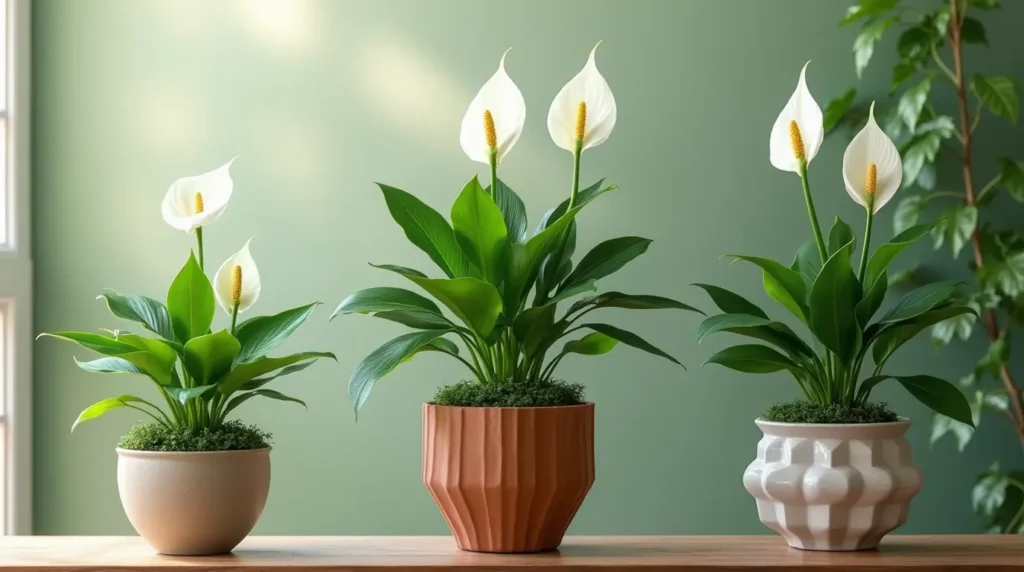
Propagating Your Peace Lily
Propagating a Peace Lily is a rewarding way to grow your plant collection or share this beautiful plant with friends and family. Here’s how to do it:
- When to Propagate: The best time to propagate is during repotting, typically in spring or early summer when the plant is actively growing.
- Division Method: Gently remove the Peace Lily from its pot and separate the root ball into smaller sections, ensuring each division has healthy roots and at least a few leaves.
- Replanting: Plant each division in a well-draining potting mix and water thoroughly. Place the new plants in a warm, humid spot with indirect light to help them establish.
Pro Tip: Use a clean, sharp knife or scissors to divide the root ball, and sterilize your tools to prevent infections.
Pruning and Maintenance
Regular pruning keeps your Peace Lily looking its best and encourages healthy growth. Master it like a pro with these steps:
- Remove Dead Leaves and Flowers: Trim yellow or brown leaves and spent flowers at the base using clean scissors. This prevents the plant from wasting energy on dead or dying parts.
- Shape the Plant: If your Peace Lily becomes too leggy or uneven, trim back overgrown stems to maintain a balanced shape.
- Clean the Leaves: Wipe the leaves with a damp cloth to remove dust and keep them glossy. This also enables the plant to capture more light.
Pro Tip: Pruning is also a great time to inspect your plant for pests or signs of disease. Early detection makes treatment easier.
Exploring Spathiphyllum Varieties
Did you know there are several varieties of Peace Lily? Each has its own unique characteristics, making them perfect for different spaces and preferences. Here are a few popular ones:
- Spathiphyllum wallisii (Common Peace Lily): The most widely available variety, known for its compact size and classic white blooms.
- Spathiphyllum ‘Mauna Loa’: A larger variety with broader leaves and bigger flowers, ideal for making a bold statement.
- Spathiphyllum ‘Sensation’: The largest of all Peace Lily varieties, with stunning, deep green leaves that can grow up to 6 feet tall.
- Spathiphyllum ‘Domino’: A variegated variety with striking white streaks on its leaves, adding a unique twist to the classic look.
Pro Tip: Mix and match different varieties to create a diverse and visually appealing indoor garden.
Enhancing Humidity for Tropical Vibes
Since Peace Lilies originate from tropical regions, they thrive in humid environments. Here are some creative ways to boost humidity for your plant:
- Pebble Tray Method: Fill a tray with water and pebbles, then place the plant pot on top. As the water evaporates, it forms a moist microclimate surrounding the plant.
- Grouping Plants: Cluster your Peace Lily with other humidity-loving plants like ferns or calatheas to create a microclimate.
- Humidifier: Use a humidifier in the room to maintain consistent humidity levels, especially during dry winter months.
- Misting: Lightly mist the leaves with water, but avoid overdoing it to prevent fungal issues.
Pro Tip: If you notice brown leaf tips, it’s a sign that your Peace Lily needs more humidity.
Creative Display Ideas
A Peace Lily is not just a plant—it’s a design element that can elevate your home decor. Here are some creative ways to display it:
- Statement Piece: Place a large Peace Lily in a decorative pot and use it as a focal point in your living room or entryway.
- Hanging Baskets: For smaller varieties, consider hanging them in baskets to add greenery at eye level.
- Terrariums: Create a mini indoor garden by pairing your Peace Lily with moss, stones, and other small plants in a glass terrarium.
- Bathroom Oasis: Take advantage of the Peace Lily’s love for humidity by placing it in your bathroom for a spa-like vibe.
Pro Tip: Experiment with different pot styles and materials, such as ceramic, woven baskets, or metallic finishes, to match your decor theme.
By incorporating these pro tips and exploring the diverse world of Peace Lily varieties, you can unlock the full potential of this stunning plant. In the next section, we’ll dive into creative ways to display your Peace Lily and make it a standout feature in your home.
4. Creative Ways to Display Peace Lilies in Your Home
The Peace Lily is not just a plant—it’s a versatile decor element that can enhance any room in your home. Whether you’re looking to create a serene oasis, add a pop of greenery, or make a bold statement, these creative display ideas will help you showcase your Peace Lily in ways that elevate your space and reflect your personal style.
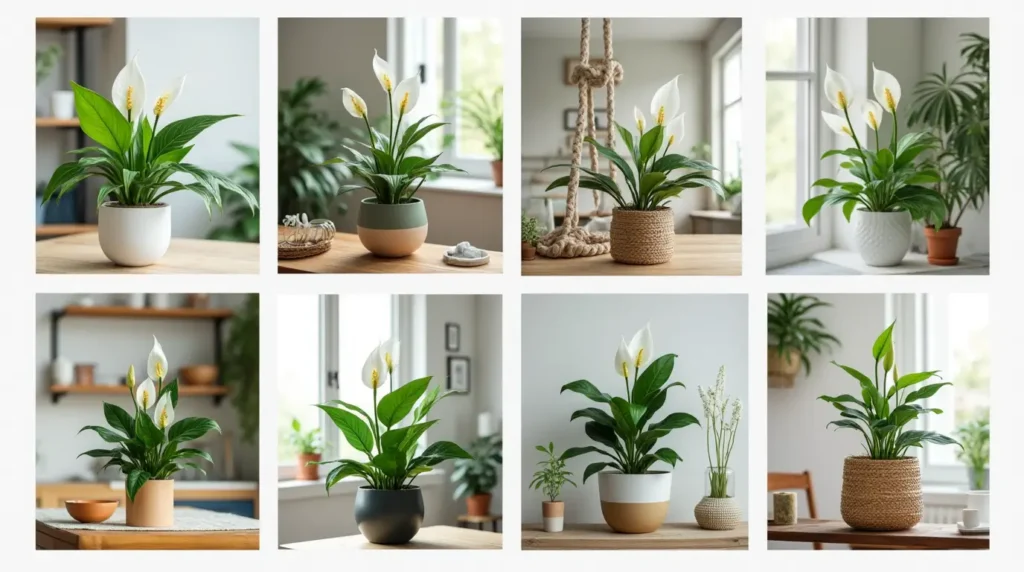
Peace Lilies as Centerpieces
A Peace Lily makes a stunning centerpiece that can instantly elevate your dining table, coffee table, or console. Here’s how to style it:
- Choose the Right Pot: Opt for a decorative pot that complements your decor. Ceramic, metallic, or hand-painted pots add a touch of elegance.
- Pair with Accessories: Surround your Peace Lily with candles, books, or small decorative objects to create a cohesive look.
- Seasonal Touches: During holidays or special occasions, add seasonal accents like pinecones, fairy lights, or festive ornaments to the arrangement.
Pro Tip: For a minimalist look, place a single Peace Lily in a sleek, monochrome pot and let its natural beauty shine.
Office and Workspace Decor
Bringing a Peace Lily into your office or workspace can boost productivity, reduce stress, and improve air quality. Here’s how to incorporate it:
- Desk Companion: Place a small Peace Lily on your desk to add a calming presence and a touch of nature to your work environment.
- Shelving Display: Use floating shelves to showcase your Peace Lily alongside other small plants or decor items.
- Meeting Room Focal Point: Add a larger Peace Lily to your meeting room or common area to create a welcoming atmosphere.
Pro Tip: Pair your Peace Lily with other low-maintenance plants like succulents or snake plants for a balanced, green workspace.
Bathroom Oasis with Peace Lilies
The Peace Lily’s love for humidity makes it a perfect addition to your bathroom. Here’s how to create a spa-like oasis:
- Windowsill Display: Place your Peace Lily on a windowsill where it can enjoy indirect light and the steam from your shower.
- Floating Shelves: Install shelves above your bathtub or sink to display your plant alongside candles, towels, or bath products.
- Corner Accent: Use a tall Peace Lily to fill an empty corner, adding height and lush greenery to the space.
Pro Tip: Combine your Peace Lily with other humidity-loving plants like ferns or orchids for a tropical bathroom retreat.
Combining Peace Lilies with Other Houseplants
Grouping your Peace Lily with other plants can create a lush, indoor jungle that transforms your space. Here’s how to do it:
- Layered Look: Use plant stands or shelves to arrange your Peace Lily with taller plants like fiddle leaf figs and shorter plants like pothos for a layered effect.
- Color Coordination: Pair your Peace Lily with plants that have contrasting foliage, such as red-edged prayer plants or variegated rubber plants, for a vibrant display.
- Themed Arrangements: Create a tropical theme by combining your Peace Lily with palms, bird-of-paradise, and monstera plants.
Pro Tip: Use matching pots or baskets to tie the arrangement together and create a cohesive look.
Hanging Displays and Vertical Gardens
If you’re short on floor or shelf space, consider hanging your Peace Lily or incorporating it into a vertical garden:
- Hanging Baskets: Use macramé hangers or decorative baskets to suspend your Peace Lily from the ceiling or wall.
- Wall-Mounted Planters: Install wall-mounted planters or living walls to showcase your Peace Lily alongside other trailing plants like ivy or philodendrons.
- Tiered Stands: Use a tiered plant stand to display your Peace Lily at different heights, adding depth and visual interest to your space.
Pro Tip: Ensure your hanging Peace Lily is securely placed and receives enough indirect light to thrive.
Seasonal and Themed Displays
Get creative with seasonal and themed displays to keep your Peace Lily looking fresh and exciting all year round:
- Spring: Pair your Peace Lily with blooming flowers like tulips or daffodils for a cheerful spring vibe.
- Summer: Add seashells, driftwood, or tropical accents to create a beachy summer theme.
- Fall: Surround your Peace Lily with pumpkins, gourds, and autumn leaves for a cozy fall display.
- Winter: Decorate your plant with fairy lights, pinecones, and ornaments for a festive winter look.
Pro Tip: Use seasonal decor that complements your Peace Lily’s natural beauty without overwhelming it.
By incorporating these creative display ideas, you can showcase your Peace Lily in ways that enhance your home’s aesthetic and reflect your personal style. In the next section, we’ll wrap up with a conclusion that ties everything together and inspires readers to embrace the wonders of this remarkable plant.
Pro Tip: If the soil is already moist, drooping could indicate overwatering or root rot. Check the roots and adjust your care routine accordingly.
5. Frequently Asked Questions About Peace Lilies
Here are quick answers to common questions about Peace Lilies:
Are Peace Lilies Toxic to Pets?
Yes, they’re toxic to cats and dogs if ingested. Keep them out of reach or choose pet-safe plants.
How Often Should I Water My Peace Lily?
Water when the top inch of soil feels dry, typically once a week. Drooping leaves means it’s thirsty.
Can Peace Lilies Survive in low Light?
Yes, they thrive in low light but bloom best in bright, indirect light.
Why Are My Peace Lily’s Leaves Turning Yellow?
Yellow leaves can mean overwatering, underwatering, or nutrient issues. Adjust care and trim damaged leaves.
Do Peace Lilies Bloom All Year?
They bloom most in spring and summer but can flower year-round with proper care.
How Do I Revive a Drooping Peace Lily?
Water it thoroughly—it should perk up in a few hours. If the soil is wet, check for root rot.
Can I Grow a Peace Lily Outdoors?
Only in warm, humid climates (zones 10-12). Indoors is best for most regions.
How Big Do Peace Lilies Get?
Small varieties grow 1-2 feet tall, while larger ones like ‘Sensation’ can reach 6 feet.
Do Peace Lilies Help with Air Quality?
Yes, they remove toxins like formaldehyde and benzene, improving indoor air quality.
Conclusion
The Peace Lily is more than just a houseplant—it’s a versatile, low-maintenance powerhouse that brings beauty, cleaner air, and a sense of calm to any space. Whether you’re a seasoned plant enthusiast or a beginner, this elegant plant offers something for everyone. From its air-purifying abilities to its stunning blooms, the Peace Lily proves that nature’s wonders can thrive right in your home.
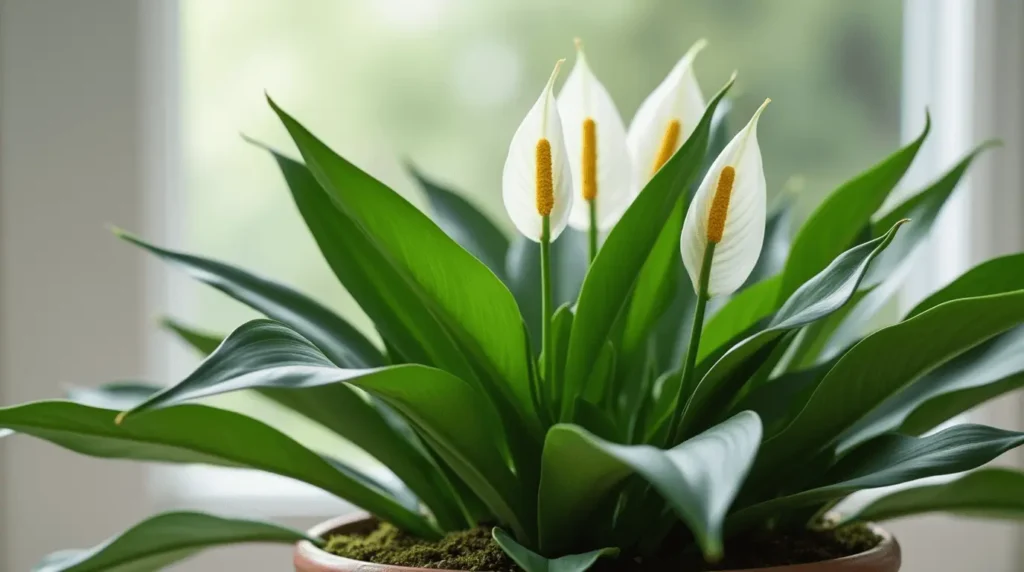
By following the care tips, creative display ideas, and solutions to common challenges outlined in this guide, you can enjoy the many benefits of this remarkable plant. So why wait? Bring home a Peace Lily today and transform your space with its vibrant energy and timeless charm.

